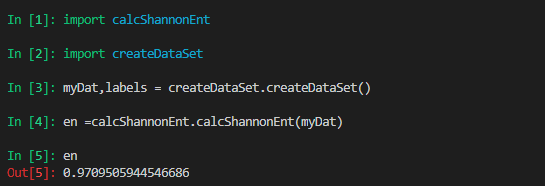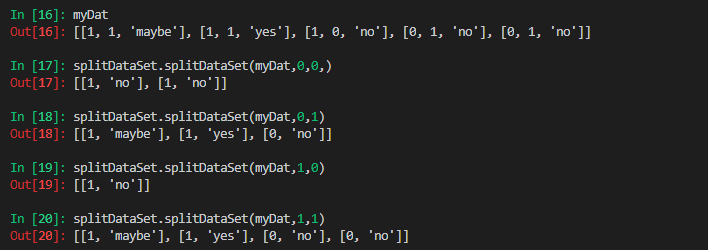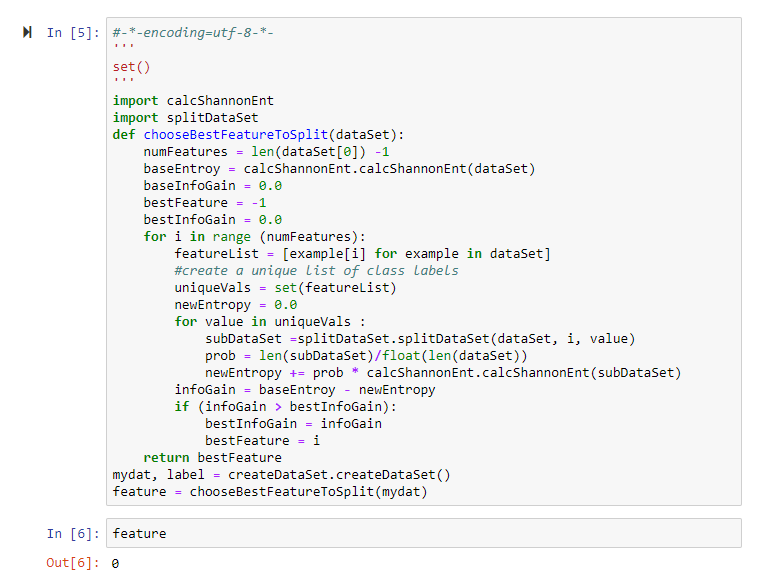Decision Tree
[TOC]
Pre:
如下图所示,决策树包含判断模块、终止模块。其中终止模块表示已得出结论。
相较于KNN,决策树的优势在于数据的形式很容易理解。
相关介绍
- 奥卡姆剃刀原则: 切勿浪费较多的东西,去做‘用较少的的东西,同样可以做好的事情’。
- 启发法:(heuristics,策略法)是指依据有限的知识(不完整的信心)在短时间内找到解决方案的一种技术。
- ID3算法:(Iterative Dichotomiser3 迭代二叉树3代) 这个算法是建立在奥卡姆剃刀原则的基础上:越是小型的决策树越优于大的决策树(简单理论)。
Tree construction
General approach to decison trees
Collect : Any
Prepare : This tree-building algorithm works only on nominal values(标称型数据), so any continuous values will need to quantized(离散化).
Analyze :Any methods, need to visually inspect the tree after it is built.
Train : Construct a tree data structure.
Test : Calcuate the error rate with the learned tree
use : This can be used in any supervised learning task, often, trees used to better understand the data
——《Machine Learning in Action》
Information Gain 信息增益
信息增益:在划分数据之前之后信息发生的变化. 划分数据集的大原则是:(We chose to split our dataset in a way that make our unorganized data more organized)将无序的数据变得更加有序。
1. 信息增益的计算
Claude Shannon(克劳德.香农) > Claude Shannon is considered one of the smartest people of the twentieth century. In William Poundstone’s 2005 book Fortune’s Formula, he wrote this of Claude Shannon: “There were many at Bell Labs and MIT who compared Shannon’s insight to Ein-stein’s. Others found that comparison unfair—unfair to Shannon.”
1.1 信息(Information):
- 信息多少的量度
[l(x_i)=\log_2P(x_i)]
1.2 熵(entropy):
- 在吴军的《数学之美》中,认为信息熵的大小指的是,了解一件事情所需要付出的信息量是多少,这件事情的不确定性越大,要搞清楚它所需要的信息量就越大,信息熵也就越大。
加入一枚骰子的六个面只有1,那么投掷不会带来任何信息,其信息熵就是 0
在我看来,熵就是描述系统的有序化程度。有序化越低,可选择的就越少,在决策树中就越容易分类。反正。。。。
公式:
[(x)=\sum_{i=1}(i)(x_i)= -\sum_{i=1}(x_i)\log_b(x_i)]
代码:
#-*- encoding:utf-8-*-
# Function to calcuate the Shannon Entropy of a dataset
#
from math import log
def calcShannonEnt(dataSet):
numEntries = len(dataSet)
labelCounts = {}
# create a dictionary of all posssible classes
for featVec in dataSet:
currentLabel = featVec[-1]
if currentLabel not in labelCounts.keys():
labelCounts[currentLabel] = 0 #??
#labelCounts[currentLabel] = 1
labelCounts[currentLabel] += 1
shannonEnt = 0.0
for key in labelCounts:
prob = float(labelCounts[key]/numEntries)
shannonEnt -= prob * log (prob,2)
return shannonEnt
实例计算: 
首先根据上图创建一个数据集
#-*-encoding=utf-8-*-
# filename : createDataSet.py
# utilizing the createDataSet()function
# The simple data about fish identification from marine animal data
def createDataSet():
dataSet = [[1,1,'yes'],
[1,1,'yes'],
[1,0,'no'],
[0,1,'no'],
[0,1,'no']]
labels = ['no surfacing','flippers']
return dataSet, label

使用计算熵方法计算该数据集的熵: 
如若修改上述数据集,得到的结果为: 
一个系统越是有序,信息熵就越低;反正,一个系统越混乱,信息熵就越高。
1.3 信息增益(Information Gain):
在决策树中,关键的是如何选择最有划分属性,一般来说,我们希望划分后分支节点所含的样本尽量属于同一类节点,即节点的的纯度越高越好。
- 数据集划分
根据不同属性将数据集划分子集 代码:
#-*- encoding=utf-8 -*-
# split the dataSet
'''
this function split very feature from the dataset then to calculate the Information Gain sperately
dataSet: the dateset will be splited
axis :
value: the value of the feature to return
the difference between extend() and append()
a= [1,2,3]
b= [4,5,6]
a.append(b)
a = [1,2,3,[4,5,6]]
a.extend(b)
a = [1,2,3,4,5,6]
'''
def splitDataSet(dataSet,axis,value):
# create a new list
retDataSet = []
for featVec in dataSet:
# cut out the feature split on
if featVec[axis] == value:
reducedFeatVec = featVec[:axis]
reducedFeatVec.extend(featVec[axis+1:])
retDataSet.append(reducedFeatVec)
return retDataSet
不同划分的结果:  从上图可以看出当使用属性0划分时结果更合理;
从上图可以看出当使用属性0划分时结果更合理;
- 计算最佳划分的特性:
#-*-encoding=utf-8-*-
'''
set()
'''
import calcShannonEnt
import splitDataSet
def chooseBestFeatureToSplit(dataSet):
numFeatures = len(dataSet[0]) -1
baseEntroy = calcShannonEnt.calcShannonEnt(dataSet)
baseInfoGain = 0.0
bestFeature = -1
bestInfoGain = 0.0
for i in range (numFeatures):
featureList = [example[i] for example in dataSet]
#create a unique list of class labels
uniqueVals = set(featureList)
newEntropy = 0.0
for value in uniqueVals :
subDataSet =splitDataSet.splitDataSet(dataSet, i, value)
prob = len(subDataSet)/float(len(dataSet))
newEntropy += prob * calcShannonEnt.calcShannonEnt(subDataSet) #划分后的信息熵 不同子集的信息熵和该子集的概率的之和。
infoGain = baseEntroy - newEntropy #信息增益
if (infoGain > bestInfoGain):
bestInfoGain = infoGain
bestFeature = i
return bestFeature
mydat, label = createDataSet.createDataSet()
feature = chooseBestFeatureToSplit(mydat)
其结果显示第一个划分节点为特性0时所计算的信息增益更大 
参考文章:https://www.cnblogs.com/qcloud1001/p/6735352.html





















 4989
4989











 被折叠的 条评论
为什么被折叠?
被折叠的 条评论
为什么被折叠?








